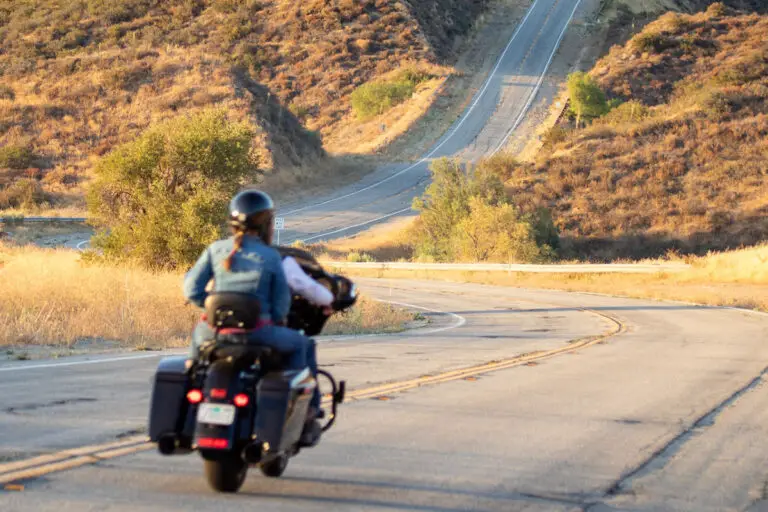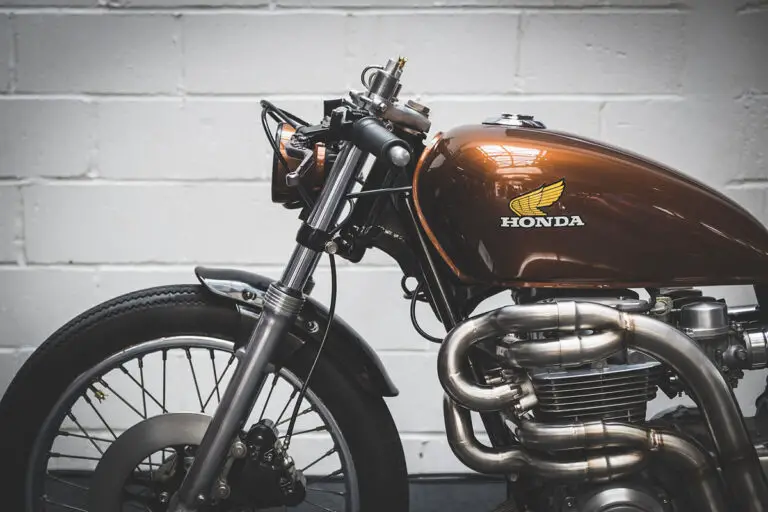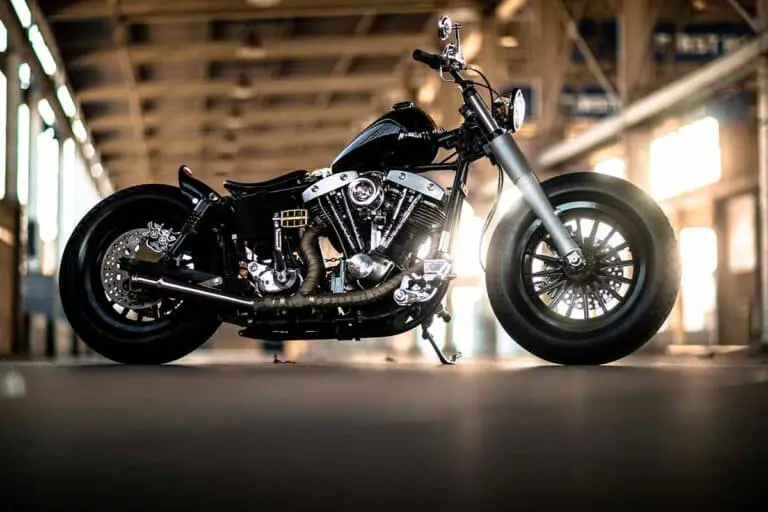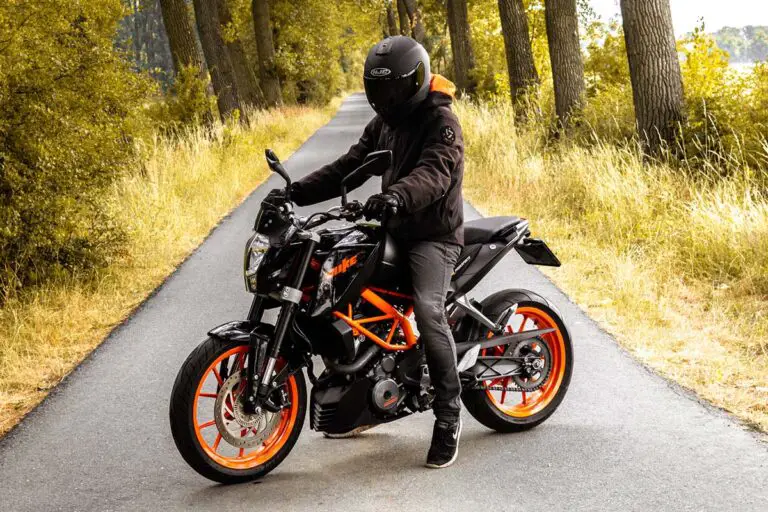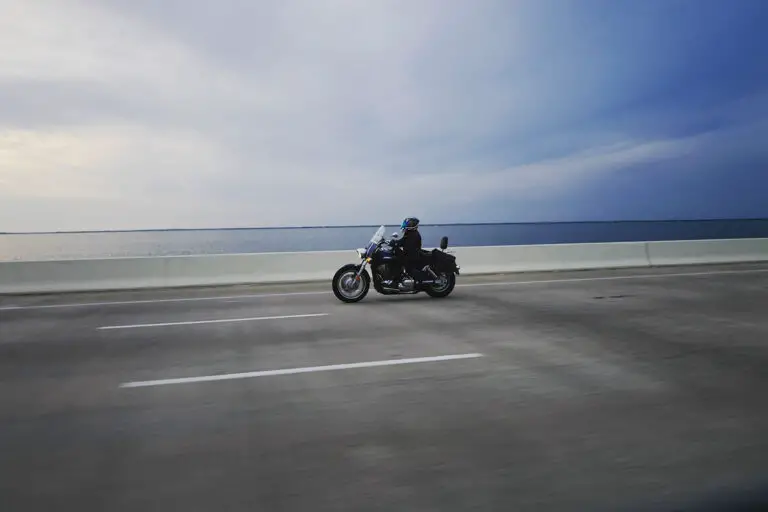What Is Motorcycle Counter Steering? (Explained)
Disclosure: We may get commissions for purchases made through links in this post.
Entering corners using a single-track vehicle — whether on the track or paved road — requires motorcycle counter steering. A riding skill that has stirred a lot of debate, countersteering is a natural reflex taught in rider courses as an additional safety measure. Many enthusiasts have not heard of this technique and, as such, do not understand its significance.
So, what is motorcycle counter steering anyway?
Motorcycle counter steering (a.k.a. gyroscopic precession steering) is a riding technique that is crucial when driving on the racetrack and navigating city roads. It is a maneuver that entails momentarily steering in the direction opposite to where you want to go.
The number of riders who have yet to grasp the concept of motorcycle counter steering can be astounding. But what is worse is the number of its naysayers. Hopefully, with safety courses, rider education, and the help of this guide, non-believers in this technique will become fewer.
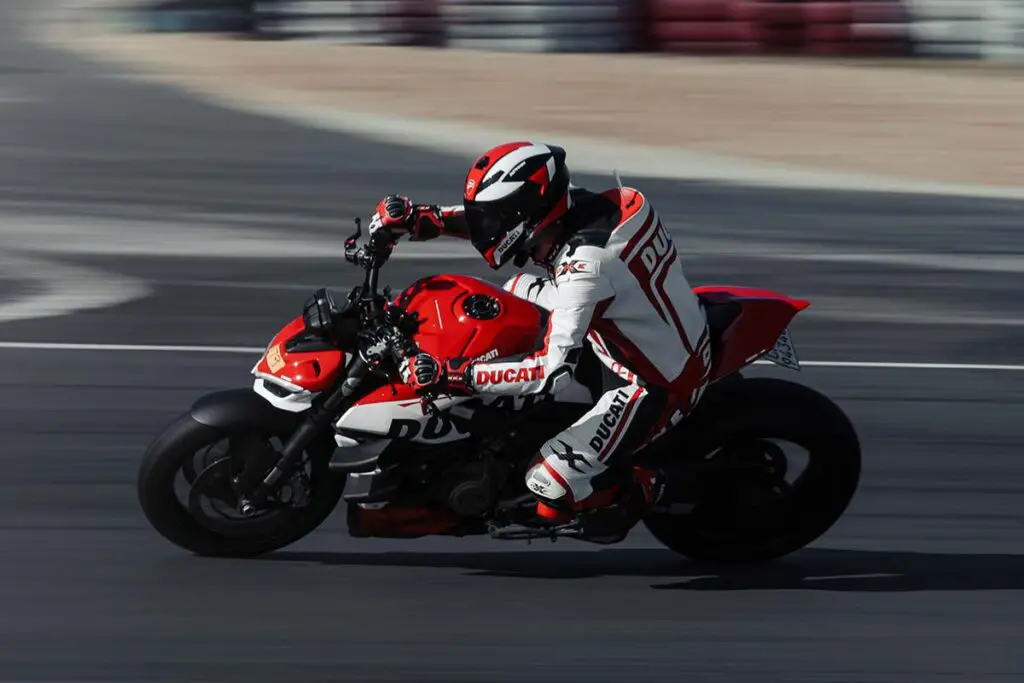
What Is Motorcycle Counter Steering?
Motorcycle countersteering (a.k.a. deliberate, positive, or active countersteering, gyroscopic precession steering) is a method of providing driver input to a motorcycle. It is also among the age-old questions asked by anyone who owns a single-track vehicle or two-wheeler. This basic skill requires intentionally steering away from the direction one would want to head towards to make a successful turn.
As incredulous as it sounds, the seemingly counter-intuitive maneuver enables riders to turn into a corner more effectively, as it ultimately changes the lean angle of a bike and dramatically improves the overall riding experience. On another note, it makes turning safer (which is a huge deal for beginner riders).
This unnatural move may not make sense for some folks, especially motorheads who drive a four-wheeler — and there is good reason behind the confusion. A car normally has its pivot point at the center of the rear axle (or alongside the rear wheels for front-wheel drive vehicles).
This pivot placement causes automobiles to turn left when you rotate the steering wheel towards the left. However, the reverse is true for two-wheelers.
When to Use It
Below is a non-exhaustive list of situations when motorcycle counter steering is required:
- On the street
- On the dirt/racetrack
- During emergencies where you need to avoid abrupt collisions with an on-road obstacle or another vehicle
- In the middle of or when exiting a corner
- In response to significant rear-wheel slippage, especially in speedway racing
How Does Counter Steering Work?
Single-track vehicles pivot at the steering neck, not with the rear wheel. Consequently, the front and rear wheels don’t follow the same path when making a turn.
For instance, the weight of a bike will shift toward the right if one pushes the handlebars (view on Amazon) to the left, with the front wheel facing the latter direction. Hence, applying the so-called car mentality on two-wheelers when it comes to cornering will not work. The same goes for object-avoidance techniques between cars and motorcycles.
Cycle World explains that you’ll briefly dip to the left, and then the bike will tilt to the right. Shift weight to the inside footpeg, and your bike will go where you want.
The way a two-wheeler pivots toward a direction is called out-tracking, a term that means “the front wheel rides outside the track of the rear wheel.” Because of this mannerism, motorcycle counter steering has become a fundamental (not to mention necessary) riding skill.
So even if it seems illogical, countersteering before turning helps manage a two-wheeler’s resistance to change directions and points the rear wheel to where the driver wants to go.
Countersteering — A Push-and-Pull Technique
To further understand motorcycle counter steering, it is crucial to know its purpose and how it is done. And contrary to popular belief, this maneuver entails more than pushing on the handlebars opposite the direction you want to tread.
The said step is only part of countersteering — one will need to pull the handlebars towards their desired direction once they have made the turn. Countersteering is a series of steps in rapid succession, not just a single action.
Furthermore, counter steering motorcycle techniques do not have to look like what you see on MotoGP racetracks. Nor does it always necessitate slinging half your body off the two-wheeler (doing so will only make for sloppy cornering). Especially for smaller-displacement motorcycles, the maneuver takes little effort (moderate at best) to execute.
That said, you may be doing something wrong if you feel the need to forcefully push yourself away from your bike (a.k.a. body lean) when making a turn. Either that or you have a fully decked-out, heavyweight thumper.
Counter Steering at Low Speed
Another thing to remember is that this necessary skill is not confined to the limits of racing. Counter steering at low speed is, in fact, necessary. Moreover, the skill is often purely instinctive — as is the case with youngsters learning to ride their bikes without training wheels for the first time or with motorheads whose riding skills are naturally wired for the road.
Many motorheads disagree with this because countersteering is often done subtly, almost close to negligible. Because it occurs in such a manner, it tends to be overshadowed by the continuous corrections a rider makes when balancing a bike (view on Amazon) or motorcycle.
Motorcycle Counter Steering vs Leaning
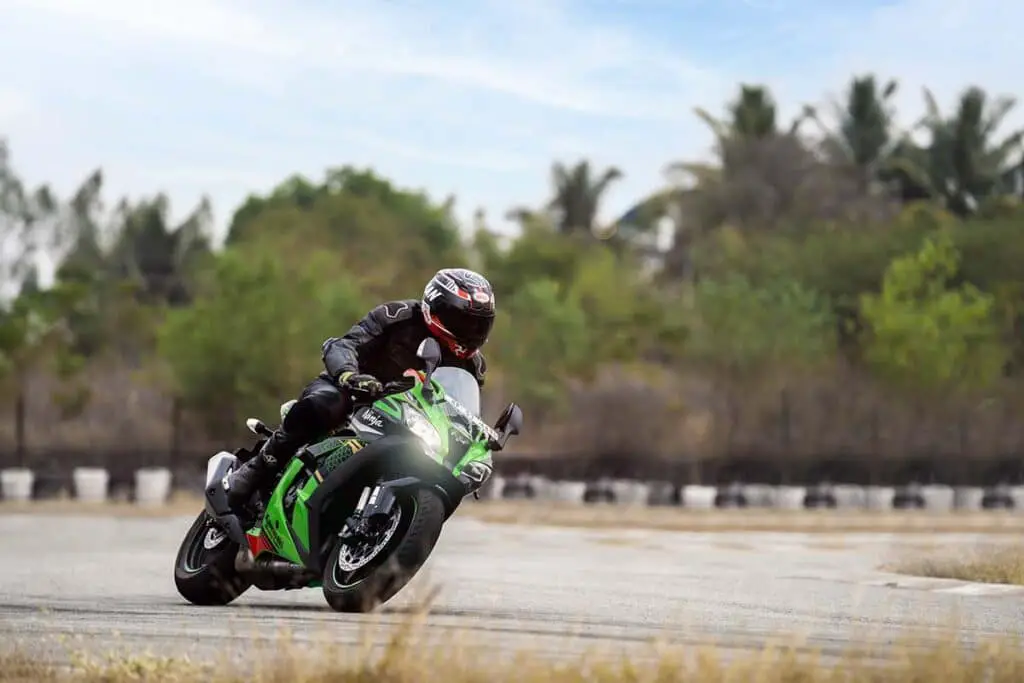
In comparing these two concepts, one of the biggest points of contestation is how similar or different they are from each other. None to blame, really.
Doing either involves an element of the other — leading to the distinction between the two becoming a ‘chicken and egg’ type of discussion. Sometimes, discussions reach the extent of igniting deep-rooted rifts among motorheads.
There is much more to these riding concepts than just determining their similarities and differences. Although motorcycle countersteering is not rocket science, it does involve several factors. Steering geometry and motorcycle weight or displacement are but a few of the things that impact its execution.
The same can be said for leaning, with facets like rider position and tire properties influencing the torque amount applied to the handlebars.
In terms of which comes first, countersteering initiates the lean, not the other way around. In some cases, motorcycle counter steering assists the lean and makes the latter easier to execute.
Whether a rider “forces a lean” (initiates the lean with the use of handlebars) or “initiates with a lean” (induces the handlebar movement), the motorcycle is bound to behave a certain way as both inputs are intertwined.
Nonetheless, it is undeniable that adding body English to countersteering helps shift the bike’s center of gravity, ultimately improving the dynamics of negotiating a turn. One version of this type of steering input is referred to as counter lean or countersteering by weight shifting.
In doing a counter lean, a rider can initiate a turn by applying momentary torque using the legs or torso instead of the handlebars. However, this method is only suitable for lightweight, single-track vehicles like bicycles.
Countersteering vs Drifting
Similar to the above, countersteering and drifting involve an element of each other when performed. Countersteering is part and parcel of drifting on a motorcycle.
The latter entails at least five elements: leaning, hard throttling, clutch operation, countersteering, and power brakes. Countersteering can be executed by itself or with a bit of body lean (at most).
With both steering methodologies, the front wheel of a two-wheeler is kept pointed toward the general direction the rider wants the bike to go. The same goes for four-wheelers, except that their pivot point is located elsewhere, and their steering is more stable, given that they have four wheels instead of two.
Some motorcycle veterans argue that the type of countersteering in flat-track racing is similar to that of drifting a car — but that is a topic for another day.
Why Do You Need to Do It?
Regardless of what some motorcyclists believe, countersteering is utilized (knowingly or otherwise) whenever a rider changes direction. It is integral to cornering and evasive maneuvers and is crucial when caught in tight corners at an unanticipated speed. Moreover, it is a safety measure and a riding skill that instills rider confidence — whether naysayers would like to admit it or not.
In the middle of a corner, for instance, slightly pushing on the inside bar (a.k.a. countersteering) allows riders to make small corrections that effectively enable them to better hold their line. Similarly, pushing on the outside handlebar as one exits a corner allows riders to stand up their motorbikes and roll on the throttle quicker.
Lane Changing
On the street, deliberate countersteering enables riders to make lane changes quicker without being tense, unlike with body steering. The technique likewise aids in quicker corner entry — a valuable skill when piercing through bumper-to-bumper city traffic.
Curvy Roads
Adventurers who have experienced riding the curvy roads of Thailand and elsewhere could not agree more with the significance of countersteering. The ability to countersteer at will tremendously helps negotiate turns in tricky terrain (not to mention prevent you from leaving your two-wheeler’s paint job on the pavement).
Avoid Accidents
But the most significant reason is that motorcycle counter steering can spell the difference between life and death. According to Quora, the Hurt Report of 1981 reported that many riders at the time of panic could have avoided getting into an on-road accident if they knew how to purposefully and correctly countersteer.
Looking more closely into the highlights of the report, it is noted that “collision avoidance problems” (especially over- and under-braking) were prevalent across the study and a major contributor to riders being unable “to avoid an impending crash.” It also did not help that most parties involved did not receive formal training on riding a motorcycle, which could have covered basic riding skills, including countersteering.
How to Practice Counter Steering on a Motorcycle
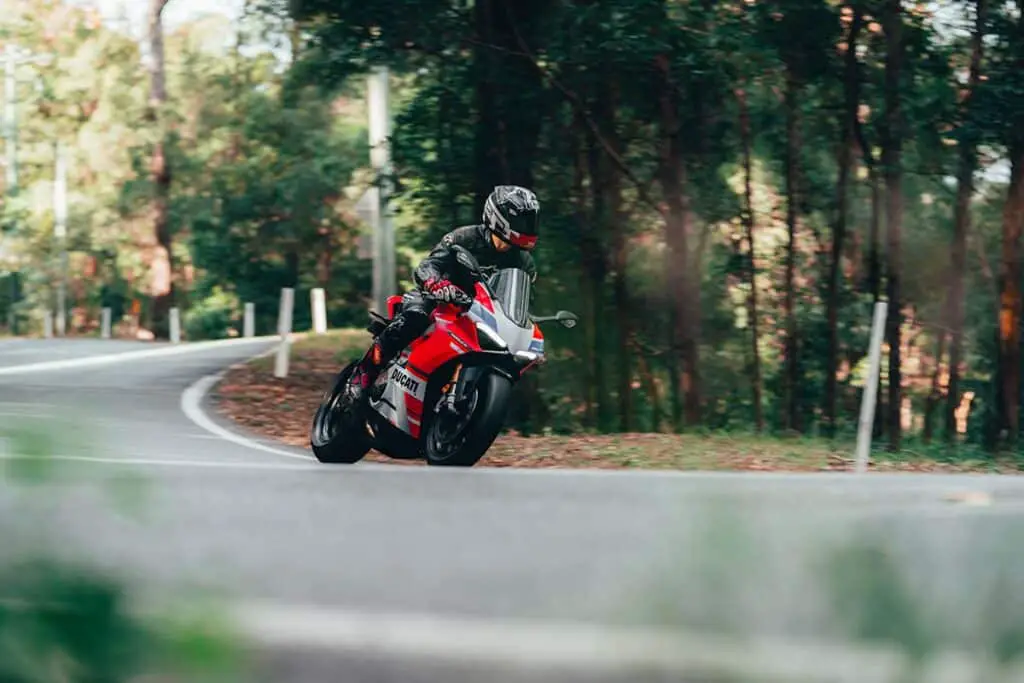
In Cycle World’s “Art & Science — Body Steering vs. Counter Steering: Part One,” the magazine cites experiments that show how motorcycle counter steering works. While they are originally meant to prove the concept and showcase the gyroscopic and centrifugal forces at play, these experiments are also a great way to practice the skill on vehicles other than motorcycles.
But if you would like to stick to your thumper, below is the best way to rehearse countersteering:
Step #1:
Find a quiet, open stretch of road where you can easily run your two-wheeler at stable speeds. Sample scenarios where this is possible involve slight downhill grades, cruise control, tail win, and throttle lock.
Step #2:
Start at a comfortable pace, leaving plenty of space on the road (in case your motorcycle swerves).
Step #3:
Once you are driving at least 10—20 mph (16—32 km/h), take your left hand off the handlebars (but hover above it as a precautionary measure so you can get it back quickly if the need arises).
Step #4:
On your right hand, place your palm flat against the bars with your fingers open. Then, gently push with your right palm and see which way the bike steers.
Step #5:
At this point, your bike should turn to the right due to the gyroscopic and centrifugal forces at work.
Step #6:
Familiarize yourself with the sensation. As you get more comfortable, repeat the step with the other handlebar and with different amounts of force.
Step #7:
If you feel uneasy with pushing the opposite handlebar, try pulling the handlebar similar to your desired direction. If you apply more force on the bars, slightly lean your body in your desired direction for better results.
Step #8:
Once you get the hang of steps 1—7, you can practice countersteering in an open parking lot by setting up a row of cones 30 feet apart and swerving around them effectively by pushing on the handlebars. Practice weaving through these markers at 20 mph (32 km/h) until you avoid all the cones without braking or slowing down.
Step #9:
To practice motorcycle counter steering on winding roads, practice turning big circles at least 50 feet in diameter. As you circle, lean further to the low side of your two-wheeler while ensuring your head is level with the horizon. This maneuver will enable you to round a curve much faster. However, take care not to be too extreme as to perform a “hanging-a-knee-off” stunt.
(Note: To test countersteering, you need to go at least 10—20 mph for the concept to work effectively — although the gyroscopic effect from your wheels may not be sufficient at speeds below 12 mph. But to really feel its effects, driving at high speeds is advised.
Also, motorcycle counter steering would not work if you do hard steering, as the bike will tip over the direction where the bars were pulled. Even on racetracks, only increased force on the handlebars is required.)
Conclusion – What Is Motorcycle Counter Steering?
Whether done deliberately or otherwise, motorcycle counter steering is an essential skill if you ride a two-wheeler. The technique is already instinctively done and just needs to be executed purposefully when it matters the most.
Some riders may continue to not see the need for it, but there is no denying its significance — especially when it comes to avoiding collisions and accidents. It is important to note, however, that this maneuver requires a lot of practice and moderation when performed to yield the best results.

